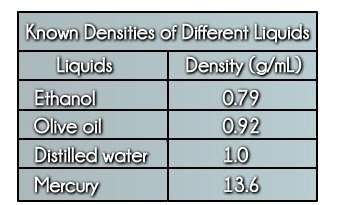
Physics, 07.04.2021 06:20 egreer9287
A pendulum of unknown mass is attached to the ceiling and nearly touches the floor as it completes 6 full cycles in 45 s. At its lowest point, the pendulum moves at a speed of 4.15 m/s.
part a. What is the height of the ceiling?
part b. What is the maximum height of the pendulum?
part c. If the pendulum were moved to the moon, with a gravitational acceleration of 1.62 m/s2, what would be the resulting frequency?
part d. If the pendulum, back on Earth, were raised to a height of 0.22 m and released, what would be the resulting frequency of the motion?

Answers: 2


Other questions on the subject: Physics

Physics, 21.06.2019 22:30, dyamondgeorge1oy4nex
During takeoff, the sound intensity level of a jet engine is 170db at a distance of 34 m. what's the sound intensity level at a distance of 1.0 km?
Answers: 2

Physics, 22.06.2019 12:10, anaroles04
Light traveling in water, nwater = 1.33, strikes a plastic block at an angle of incidence of 51.4°; part of the beam is reflected and part is refracted. if the index of refraction of the plastic is 2.0, what is the angle made by the reflected and refracted beams?
Answers: 2

Physics, 22.06.2019 16:50, boopiee2349
Which best describes the first law of thermodynamics as compared to the second law of thermodynamics? a. the first law describes how thermal energy is conserved but not the direction it moves. b. the first law describes the direction thermal energy moves but not how it is conserved. c. the first law describes how thermal energy can be created but not how it can be destroyed. d. the first law describes how thermal energy can be destroyed but not how it can be created.
Answers: 1

Physics, 22.06.2019 17:30, BabyG1353
Asilver dollar is dropped from the top of a building that is 1324 feet tall. use the position function below for free-falling objects. s(t) = −16t2 + v0t + s0 (a) determine the position and velocity functions for the coin. s(t) = v(t) = (b) determine the average velocity on the interval [1, 2]. ft/s (c) find the instantaneous velocities when t = 1 second and t = 2 seconds. v(1) = ft/s v(2) = ft/s (d) find the time required for the coin to reach the ground level. (round your answer to three decimal places.) t = s (e) find the velocity of the coin at impact. (round your answer to three decimal places.) ft/s
Answers: 3
You know the right answer?
A pendulum of unknown mass is attached to the ceiling and nearly touches the floor as it completes 6...
Questions in other subjects:













